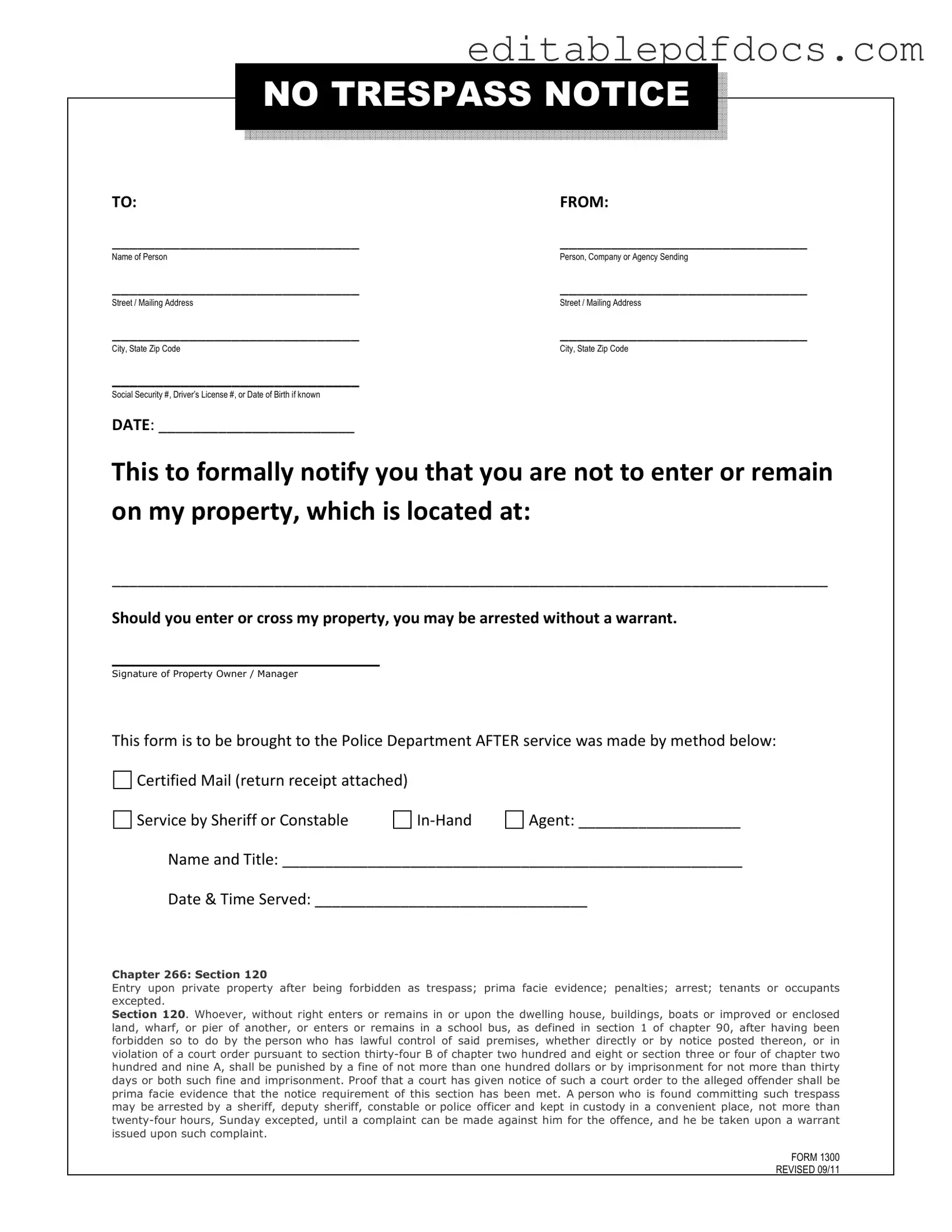Filling out a No Trespassing Letter form requires careful attention to detail. One common mistake is failing to provide complete information in the "TO" and "FROM" sections. If the names or addresses are incorrect or incomplete, the letter may not be valid. Always double-check these fields to ensure accuracy.
Another frequent error is neglecting to specify the exact location of the property. The form includes a space for the property address, and omitting this information can lead to confusion. Clearly stating the address helps avoid misunderstandings about which property the letter pertains to.
People often forget to include the date on the form. This date is crucial as it establishes when the notification is effective. Without a date, the letter may lose its legal standing, making it difficult to enforce any subsequent actions.
Some individuals overlook the importance of the delivery method. The form requires that the letter be served via certified mail, sheriff, or in-hand delivery. Failing to follow these methods can result in the letter not being recognized as legally binding.
Another mistake is not including the name and title of the agent serving the letter. This information is essential for documentation purposes. If the letter is ever challenged, having this detail can provide clarity on how the notification was delivered.
People sometimes forget to provide the date and time of service. This information is vital for establishing a timeline. Without it, there may be disputes about when the notification was actually delivered.
Lastly, individuals may leave out the warning about potential legal consequences for trespassing. Clearly stating that trespassers may face arrest is important. This warning emphasizes the seriousness of the notice and can deter unwanted entry onto the property.
